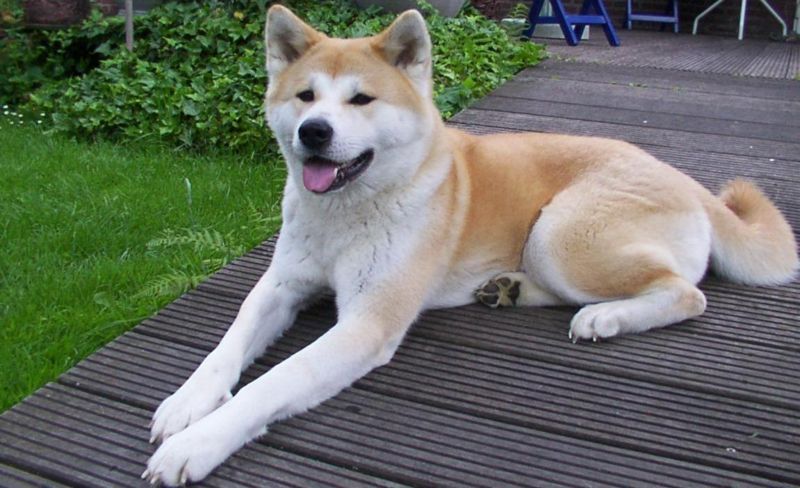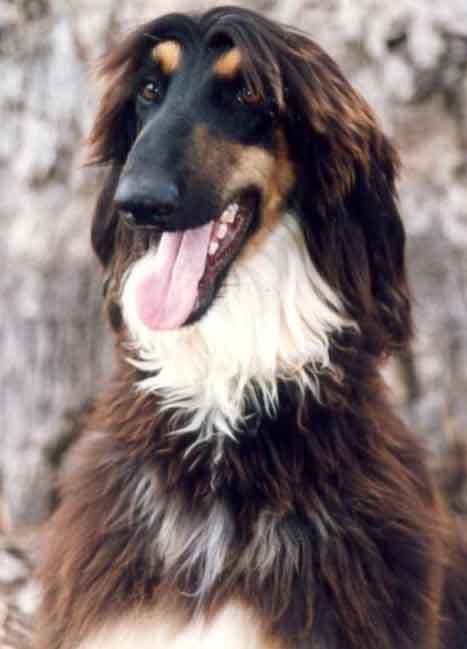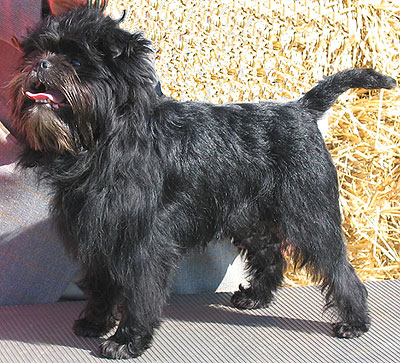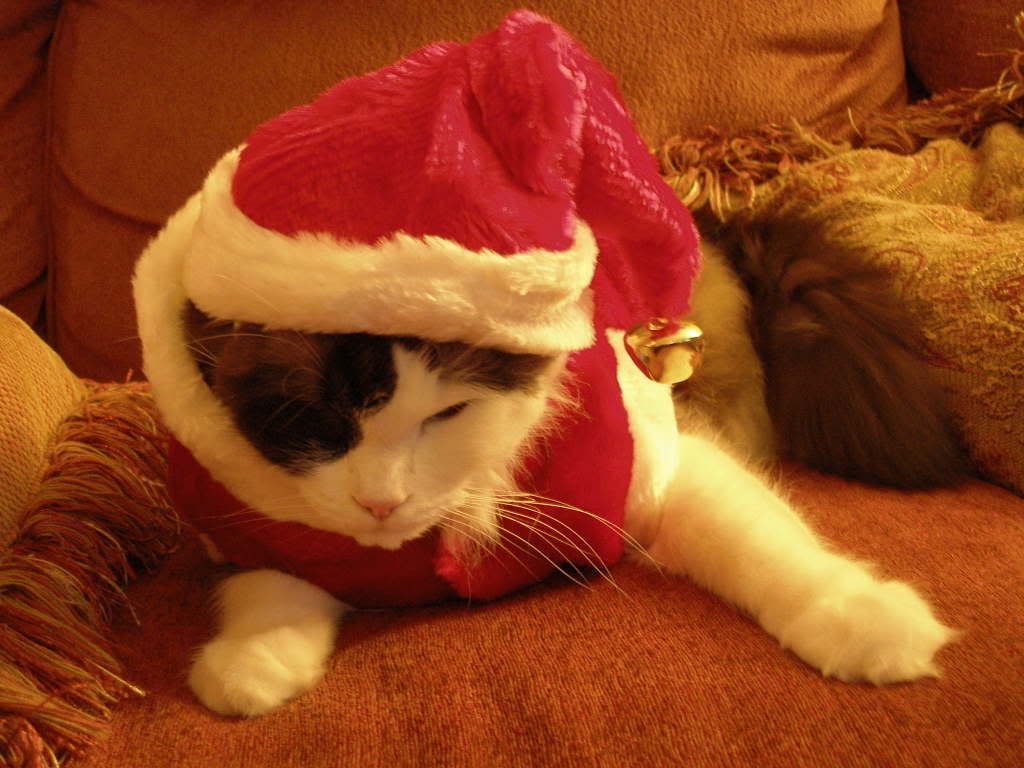A qualidade da água é essencial para a saúde dos peixes confinados em ambientes artificiais, como um aquário. É fundamental um controle rígido sobre a água a ser utilizada, pois sua má qualidade acarreta estresse, tornando-os mais sensíveis às enfermidades, devido ao seu equilíbrio fisiológico e conseqüente alteração de seu sistema imunológico, debilitando sua capacidade de reagir aos patógenos. Entre os principais fatores a serem observados na qualidade da água estão o oxigênio dissolvido, pois sua redução pode facilitar o ataque das mais variadas espécies de patógenos; a temperatura da água, por serem animais ectotérmicos e em caso de oscilações bruscas, afeta seu metabolismo, expondo os peixes a vários patógenos; o pH, que tem ação direta na sua mobilidade e influência na quantidade de amônia dissolvida; a renovação da água, o principal fator devido à retirada de grandes concentrações de substâncias tóxicas e/ou parasitas; e a densidade populacional, que merece atenção especial, pois elevadas taxas de densidade influenciam negativamente o desenvolvimento dos peixes, provocando estresse fisiológico e facilitando a proliferação e a transmissão de doenças. Os peixes mantidos em condições artificiais, como aquários ou tanques, favorecem condições da existência de uma enorme quantidade de patógenos, pois em condições naturais seu estado nutricional e fisiológico está devidamente ajustado ao meio em que vivem. Ao se montar um aquário, assume-se a responsabilidade não só de alimentar os peixes, mas também de propiciar condições para que vivam em um ambiente próximo ao natural. Para tanto, é de extrema importância conhecer suas exigências biológicas, manter as condições básicas para sua sobrevivência. Assim procedendo, evita-se além de gastos desnecessários e o desânimo com hobby escolhido. O aquário deve propiciar alegria e satisfação para que o mantém.

No aquário deve existir equilíbrio entre a saúde do peixe, a proliferação de patógenos e as condições do ambiente aquático. Sendo assim, a má qualidade da água, redução do oxigênio dissolvido, alterações bruscas de temperatura, alta densidade populacional de peixes e a nutrição desequilibrada são fatores capazes de produzirem estresse nos peixes, influenciando a ação de infecções bacterianas, fúngicas e parasitárias. Deve ser lembrado que esses microrganismos estão normalmente presentes no ambiente, no corpo e mesmo nas vísceras dos peixes e caso ele sofra certo desequilíbrio fisiológico, esta aberta à porta de entrada para tais infecções. A matéria orgânica sedimentada no fundo, tais como folhas mortas, fezes e sobras de ração, contribui para a liberação da amônia no ambiente aquático, que somada a amônia proveniente da excreção nitrogenada dos peixes pelas brânquias e urina, causam danos a eles quando encontrados em níveis tóxicos, como infecções bacterianas devido ao estresse fisiológico. Para garantir a total saúde dos peixes é necessário garantir a qualidade da água do aquário, através da sifonagem do substrato retirando partículas em decomposição do fundo do aquário, trocando semanalmente cerca de 20% de água e a limpeza do filtro quinzenalmente; fornecer alimentação de qualidade e em quantidade suficiente a ser consumida pelos peixes em no máximo cinco minutos; e fazer quarentena nos novos habitantes adquiridos para evitar a introdução de alguma doença no tanque principal e evitar o estresse dos peixes.
A seguir são apresentadas algumas doenças típicas que acometem os peixes ornamentais e suas principais causas:
Oodinium limneticum: conhecida também como Oodinose, causada por um protozoário altamente patogênico que acomete principalmente espécies de peixes tropicais. É comumente chamada de doença do veludo e seu ciclo de vida completo varia de acordo com a temperatura da água e dura aproximadamente 5 a 7 dias. Depois de atingido o estado de maturação, o protozoário destaca-se do hospedeiro e transforma-se em um cisto esférico, onde ira se multiplicar no substrato. O resultado desta multiplicação é a produção de inúmeros esporos flagelados que podem nadar e infestar um novo hospedeiro. Os sinais clínicos iniciais são pequenas irritações cutâneas, aumento da produção de muco e distúrbios natatórios. Em níveis mais avançados, surgem manchas brilhantes acastanhadas na superfície do corpo em forma de veludo e os peixes já apresentam disfunção respiratória e danos nas brânquias causados pelo parasito. Para tratamento, o indicado é usar medicamentos composto a base de formalina em baixas concentrações.

Ichthyophthirius multifiliis: Conhecido como Ictío ou doença dos pontos brancos, é uma das principais doenças parasitárias ocorridas em peixes no mundo. Na piscicultura de corte é responsável por grandes gastos em relação a perda dos peixes e medicamentos. Seu ciclo de vida dura aproximadamente 5 a 7 dias. Atingido o estado de maturação, o protozoário destaca-se do hospedeiro e transforma-se em um cisto esférico, onde ira se multiplicar no substrato. O resultado desta multiplicação é a produção de inúmeros esporos flagelados que podem nadar e infestar um novo hospedeiro. O sinal clínico evidente é a presença de inúmeros pontos brancos de 0,5 a 1 mm na pele e nadadeiras, e a irritação cutânea, nadadeiras fechadas e perda do apetite. No tecido branquial são responsáveis por considerável perda funcional do órgão. A maneira mais adequada para se evitar a ictiofitiríase é levar em conta a boa qualidade da água, e evitar o estresse, principalmente o motivado pelas oscilações térmicas bruscas. Um dos principais meios de combate ao ciclo desse protozoário é o aumento da temperatura e a administração de azul de metileno em baixas concentrações.

Hidropisia ou barriga d’ água: É um conjunto de sintomas e sinais que surgem através da ação de certas doenças. Ocorre quando há retenção de líquidos na cavidade abdominal, músculos e pele dos peixes, afetando todos os seus órgãos. Seu sangue fica muito diluído, devido à diminuição do nível de proteínas do sangue, ocorrendo insuficiência dos rins e do coração do peixe, e consequentemente o inchamento e as escamas eriçadas, pois ele não consegue eliminar água de seu organismo. É causada por bactérias do gênero Aeromonas hydrophila e Pseudomonas fluorescens, e também pelo vírus Rhabdovirus carpio. Para se evitar este conjunto de sintomas que desencadeiam a hidropisia, é necessário a correta alimentação através de uma ração balanceada e manter a boa qualidade da água. Não é conhecida cura totalmente eficaz nos dias de hoje.

Columnariose: É uma doença bacteriana muito freqüente em peixes ornamentais, sendo provocada pela bactéria Flavobacterium columnaris, também conhecida como Flexibacter columnaris e Cytophaga columnari. Peixes acometidos pela doença apresentam lesões na cabeça, dorso, nadadeiras e brânquias, caracterizadas por manchas esbranquiçadas, acinzentadas e brilhantes, que nas brânquias causam necrose e a morte rápida do peixe. A qualidade e a temperatura da água são os principais fatores que influenciam a ocorrência da doença nos peixes ornamentais. A cura é feita através de antibióticos como tetraciclina, eritromicina, entre outros, de preferência aplicados na comida do peixe.

Estreptococos: Conhecida também como doenças dos olhos saltados, esta é uma doença septicemica que afeta principalmente peixes de água doce, causada principalmente por Streptococcus iniae. Os principais sinais clínicos da infecção bacteriana causada pelo Streptococcus são os olhos saltados, podendo também observar a presença de congestão e hemorragias na base das nadadeiras peitorais, caudal e na boca do peixe. A ocorrência desta doença está associada a altas temperaturas e seu tratamento é feito com uma associação de antibióticos e parasiticidas.

Micobacteriose: A micobacteriose é uma doença que pode afetar várias espécies de peixes, incluindo-se as espécies utilizadas em criações comerciais. É uma doença crônica, denominada tuberculose ou micobacteriose de peixes. Os principais sinais clínicos são o emagrecimento constante e a perda do apetite, e com o passar do tempo, a deformação da coluna vertebral. Quando apresentam este estágio de debilidade, possuem uma natação irregular na superfície da água, ou permanecem parados no fundo. O tratamento não é simples, pois na maioria dos casos os peixes são velhos e possuem o sistema imune enfraquecido e incapaz de desencadear uma recuperação. Uma forma de evitar a tuberculose de peixes é oferecer uma alimentação de boa qualidade e variada, bem como a manutenção regular do aquário, com trocas parciais de água, sifonagem do substrato e limpeza dos filtros.

Pleistophora ou doença do Néon: O Pleistophora é um parasito obrigatório intracelular, ao contrário da maioria dos outros parasitos que são externos. Essa doença atinge principalmente peixes do gênero Paracheirodon, sendo conhecida no exterior por Néon Tetra Disease, mas pode atingir varias outras espécies de peixes. Os sintomas são a perda da coloração, nado irregular e a irregularidade da coluna devido à formação de cistos do parasito. O ciclo de vida do parasito se inicia quando os peixes ingerem esporos, pois a transmissão desses é feita por via oral. Quando chega ao trato intestinal, os esporos se transformam em suas formas embrionárias, que ultrapassam o epitélio intestinal, chegando à via sanguínea e atingindo diversos órgãos, e principalmente a musculatura onde se inicia a formação de cistos. Os tecidos atingidos sofrem severa reação inflamatória seguida de necrose e morte do tecido. É uma doença considerada aguda, pois de 12 a 18 horas, já é possível verificar os primeiros peixes moribundos. A melhor maneira de evitar essa doença é proporcionar uma alimentação de boa qualidade, garantir a qualidade da água que é um fator de extrema importância, evitar mudanças bruscas de pH e ao adquirir novos habitantes mantê-los em quarentena antes de introduzi-los no aquário principal. Não é conhecida cura totalmente eficaz nos dias de hoje.

Doenças Fúngicas: A classificação dos fungos se resume basicamente em saprófitos, os quais apresentam vida livre e se alimentam de matéria orgânica em decomposição; e os parasitos, os quais se alimentam à custa de um hospedeiro. Tanto no aquarismo como na piscicultura de corte, os fungos da família Saprolegniaceae são os principais causadores das doenças, com destaque para os gêneros Saprolegnia, Achlya e Aphanomyces. Os sinais clínicos das doenças fúngicas são facilmente identificados através de lesões esbranquiçadas ou a presença de tufos de algodão na pele, nas nadadeiras, na cabeça e na boca. Em infecções severas o fungo pode atingir 80% do corpo dos peixes, ocorrendo erosões graves na epiderme e derme, facilitando sua associação com infecções bacterianas. Os peixes infectados apresentam estado doentio, permanecendo sempre parados no fundo do tanque e durante o nado apresentam perda de equilíbrio. A manifestação das doenças fúngicas esta relacionada à condição de estresse fisiológico, sendo muito comum seu surgimento nas oscilações de temperatura e também em ferimentos geralmente ocasionados por brigas entre os peixes. Como medida preventiva para evitar a infecção por fungos deve-se sempre garantir a qualidade da água, fornecer alimentos de qualidade e manter o controle da temperatura do aquário ou tanque. Os tratamentos mais eficazes utilizados atualmente para controlar doenças fúngicas consistem na aplicação de formalina, sulfato de cobre e verde de malaquita.

Os peixes geralmente são submetidos a um estresse fisiológico desde a captura até o transporte as lojas, a alimentação inadequada e a qualidade da água inadequada, tornam-os mais susceptíveis às doenças ictiológicas. Esse estresse favorece a proliferação de diversos patógenos, principalmente os obrigatórios que, encontram maior disposição e facilidade de infestações. É preciso ter em mente que o ambiente aquático é um meio no qual o acesso e a penetração de agentes patogênicos são facilitados e o confinamento dos peixes favorece ainda mais o aparecimento das doenças.Uma sugestão para se evitar tais transtornos, é manter a correta alimentação dos peixes, tal atitude garante boa qualidade de água e assim evita a superpopulaçãodentro do aquário ou tanque de criação, permitindo assim a saúde dos indivíduos nele contidos.
Referências Bibliográficas
AXEROLD, H. R. et al. Aquarium fishes of the world. T. F. H. Publications, 2005. 1018 p.
CECCARELLI, P.S.; FIGUEIRA, L.B.; FERRAZ de LIMA, C.L.B.; OLIVEIRA, C.A,1990, Observações sobre a ocorrência de parasitos no CEPTA entre 1983 e1990; Boletim Técnico do CEPTA, volume 3 (único), Pirassununga SP.
ISHIKAWA, C.M. et al. Micobacteriose em peixes. Boletim do Instituto de Pesca, São Paulo, São Paulo, v. 27, n. 2, p. 231 - 242, 2001.
LUQUE, J.L., Biologia, epidemiologia e controle de parasitos de peixes. Revista Brasileira de Parasitologia Veterinária, v.13 suplemento 1, 2004.
MARTINS, M.L.; ROMERO, N.G. Efectos del parasitismo sobre el tejido branquial en peces cultivados: estudio parasitológico e histopatológico. Revista Brasileira de Zoologia, v. 13, n. 2, p. 489-500, 1996.
NEWTON, J. C. et al. Passive immunization of tilapia, Oreochromis niloticus (L.), with anti-Streptococcus iniae whole sera. Journal Fish Disease, v.25, p.1-6, 2002. PAVANELLI, G.C.; J.C. EIRAS; R.M. TAKEMOTO. Doenças de peixes: profilaxia, diagnóstico e tratamento. Maringa: Editora Universidade Estadual de Maringá, 305 p.
2002.
ROBERTS, R.J. Fish patology. London:Bailliere Tindal, 1978. 318p. SHELBY, R.A. et al. Protective role of antibody against streptociccus iniae infection of tilapia. Veterinary Immunology International Symposium. Poster. 2001.
MABILIA, R. V. Artigos – Doenças. 2005. Disponível em: Acesso em 01 de abril de 2008
_________________________________________________________________
Prêmio
Recebi da amiga Mirian do blogger Gente Sem Saúde! o selinho: Seja consciente, Cuide do Meio Ambiente
Obrigado pelo carinho Miran!!!





































 Foi lançado recentemente o livro "Simpsonichthys e Nematolebias" do biólogo Dalton Nielsen. O Livro "Simpsonichthys e Nematolebias" apresenta os aspectos gerais dos gêneros abordados, tratando tudo sobre histórico, sistemática, morfologia, alimentação, comportamento reprodutivo, reprodução em cativeiro, doenças, distribuição geográfica e ecologia das espécies em questão. A publicação ainda traz a ficha técnica de 52 espécies com fotos coloridas, ilustrações, gráficos e tabelas em 235 páginas.
Foi lançado recentemente o livro "Simpsonichthys e Nematolebias" do biólogo Dalton Nielsen. O Livro "Simpsonichthys e Nematolebias" apresenta os aspectos gerais dos gêneros abordados, tratando tudo sobre histórico, sistemática, morfologia, alimentação, comportamento reprodutivo, reprodução em cativeiro, doenças, distribuição geográfica e ecologia das espécies em questão. A publicação ainda traz a ficha técnica de 52 espécies com fotos coloridas, ilustrações, gráficos e tabelas em 235 páginas.

























